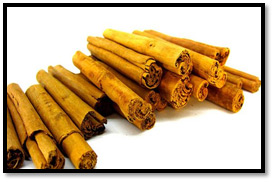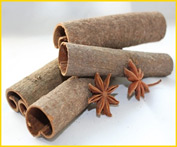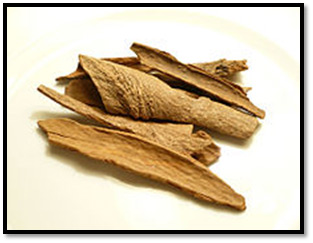Ceylon Cinnamon

Ceylon cinnamon (Cinnamomum Zeylanicum) is a tree native to Sri Lanka which produces the highest-grade pure cinnamon. This variety is more popular in much of Europe, Latin America, Mexico, the Middle East, North Africa, and South Asia. Indian curries and desert recipes of the lighter variety that call for cinnamon are typically referring to Ceylon cinnamon. Ceylon Cinnamon is the sweetest and mildest tasting and the lightest in colour.
It’s also three to four times more expensive than the other varieties. Ceylon Cinnamon has less coumarin than the other varieties, and is often recommended above others by the alternative health community and many conventional doctors as well, due to the fact that coumarin can cause liver damage in high dosages.
There are several varieties of Ceylon cinnamon produced in Sri Lanka. Following are some of the unique diversities of Ceylon cinnamon that can be found in Sri Lanka.
- Panni Miris Kurudu
- Thitta Kurudu
- Veli Kurudu
- Sevel Kurudu
- Naga Kurudu
- Penirasa Kurudu, etc.
Most of the Ceylon cinnamon is produced in southern districts such as Galle, Matara, Hambantota. Cinnamon production can take numerous forms like Quills, Feathering, Chips, Bark oil, Leaf oil, etc.
Read More - https://en.wikipedia.org/wiki/Cinnamomum_verum
Cassia Cinnamon (Chinese Cinnamon)

It can get a little confusing here since all three non-Ceylon varieties are often referred to as cassia cinnamon. The Chinese Cinnamon is often referred to as cassia cinnamon. In other words, Cassia cinnamon may refer to Chinese cinnamon or it may refer to one of the other non-Ceylon cinnamons. Saigon cinnamon or Korintjr cinnamon. Today, Tung Hing, the Chinese cinnamon is mostly grown in China and Vietnam. This variety is spicy, bitter and very intense.
Read More
http://www.webmd.com/vitamins-supplements/ingredientmono-1002-cassia%20cinnamon.aspx?activeingredientid=1002&activeingredientname=cassia%20cinnamon
https://en.wikipedia.org/wiki/Cinnamomum_cassia
Saigon Cinnamon

Known as Vietnamese cinnamon or Vietnamese cassia, Saigon cinnamon’s scientific name is Cinnamomum Loureiroi. It comes from an evergreen tree indigenous to Southeast Asia. Saigon cinnamon is closely related to Chinese cinnamon. Saigon cinnamon has around 1-5% essential oil content and 25% cinnamaldehyde in the essential oil, which is the highest of all the cinnamon species.
Saigon cinnamon’s bark is similar to that of Tung Hing, but with a more pronounced and complex aroma. In Vietnamese cuisine, Saigon cinnamon bark is an important ingredient in many dishes including pho, the well-known noodle soup.
Saigon cinnamon has a volatile oil content of around 7%, which gives it a very bold and robust flavor that is ideal for cooking and for use in sauces.
Korintje Cinnamon
Fragrant Korintje cinnamon is as intense and spicy as Chinese cinnamon, but it is also a bit smoother. Korintje cinnamon from Indonesia accounts for most of the cinnamon imported into the U.S. Although lacking the depth of Chinese cinnamon, the flavour is smoother. Korintje cinnamon is a common choice for commercial bakeries in North America because of its good flavor and lower cost.
Read More
http://www.acs.org/content/acs/en/pressroom/presspacs/2013/acs-presspac-may-8-2013/study-on-coumarin-in-cinnamon-and-cinnamon-based-products.html
http://www.thenibble.com/reviews/main/salts/cinnamon.asp